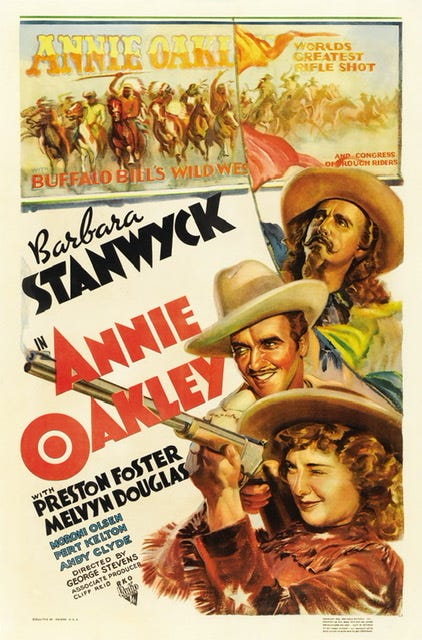Wild West sharpshooter Annie Oakley’s at the center of this 1935 movie with Barbara Stanwyck in the title role. Here, the Ohio native is portrayed as a man worshipper. When Stanwyck’s Oakley rides up with her mother and siblings—her pa died when she was young—and sees a picture of a fancy traveling cowboy, she’s instantly in love.
The rest of Annie Oakley is a free-wheeling romantic drama tucked inside a behind-the-scenes depiction of Bill Cody’s traveling show. “This is a real wild West show with he-men behaving just as they did on the range,” Cody says to a recently hired hand in his show. The audience assumes the newly hired gunslinger’s Annie Oakley, contracted in a previous scene by a talent scout (Melvyn Douglas) who witnessed Oakley in a shooting contest. It’s one of several twists to keep the audience on alert.
In fact, Annie Oakley’s mostly driven by perceptual effects. There’s jaunty music, bucking broncos in apparently real, long-form film footage, a 94-year-old Indian and An…
Keep reading with a 7-day free trial
Subscribe to Autonomia to keep reading this post and get 7 days of free access to the full post archives.




